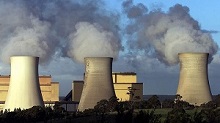 Coal provides 40% of the world’s electricity, with 75% of this capacity deemed “subcritical”, in other words dirty. That’s a little over 1,200 GW of capacity. The IEA believes that we must shut down 290 GW of subcritical generation worldwide by 2020 in order to stay within a 2°C temperature rise.
Coal provides 40% of the world’s electricity, with 75% of this capacity deemed “subcritical”, in other words dirty. That’s a little over 1,200 GW of capacity. The IEA believes that we must shut down 290 GW of subcritical generation worldwide by 2020 in order to stay within a 2°C temperature rise.
The Stranded Assets Programme at the University of Oxford’s Smith School of Enterprise and the Environment has identified the power stations, the companies and the countries, so that financers, investors and policy makers can weigh the risks and take appropriate action.
In addition to CO2 production, air pollution and the public pressure to close for that reason, is a risk factor. Finally, subcritical plants use 67% more water. Many are in climatic areas where water scarcity is a risk.
This table shows where the world’s 7,446 subcritical power stations (SCPS) are:
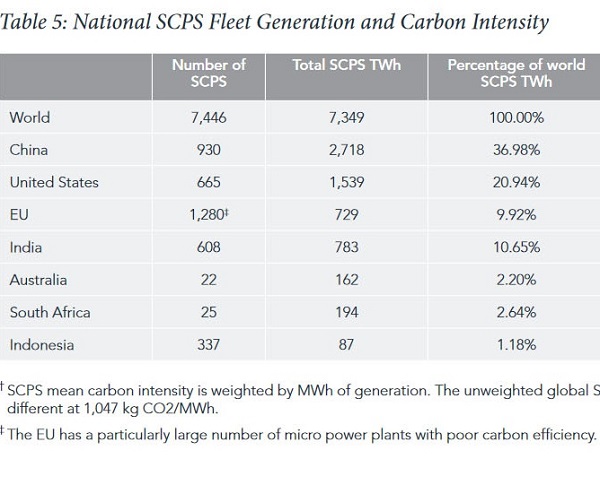
For the sake of legibility I’ve cropped the last column which shows carbon intensity. It’s basically the same for each country.
So China has roughly 37% of the problem, the US 21%, the EU and India around 10% and Australia 2.2%.
Australia has 22 of these dirty power stations, a large problem for us, but a fraction of the world’s dirty coal-fired power stations.
In both the EU and the US the SCPS are older, with few if any newer coal power stations. This contrast with China:
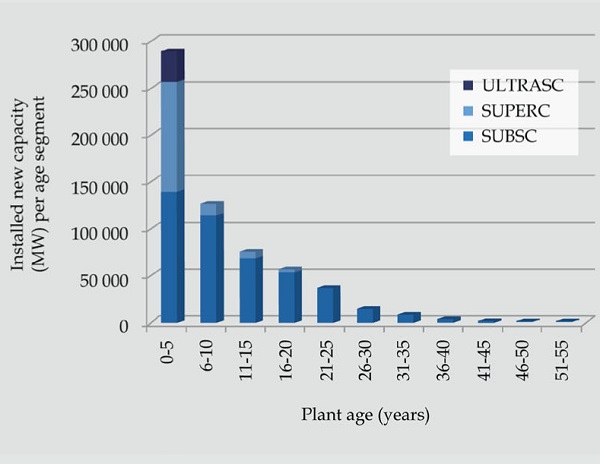
Most of China’s dirty power is young, much of it very young.
About two thirds of China’s SCPS are in highly polluted areas, one third in areas suffering from “extremely high water stress”. Around 28% are in both.
Here’s a map showing water stress:
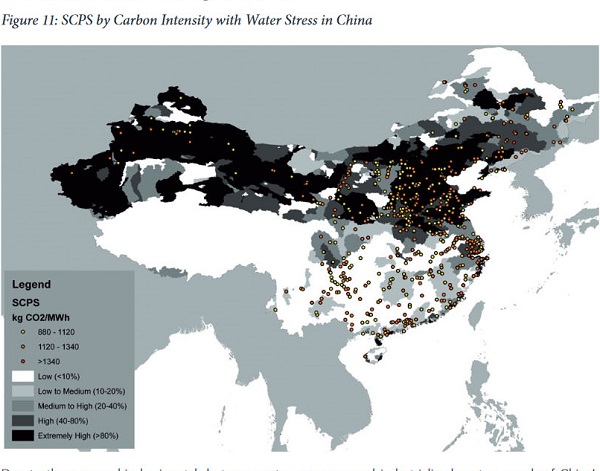
Almost 100% of China’s major SCPS companies are state owned, but many are in financial stress. The largest five were losing money.
China is now following more virtuous policies, which include the limiting and pegging back the use of coal, but the problem they have made for themselves, and us, is huge, and it remains to be seen how steadfast they will be in correcting it.
India has had a very recent burst of building very dirty SCPS:
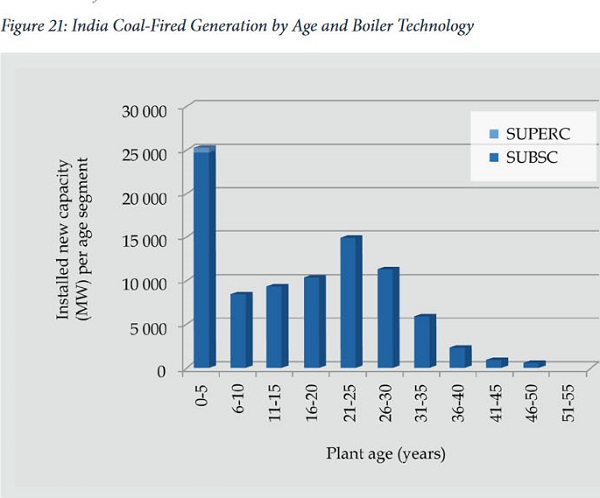
- India has recently accelerated the construction of coal-fired power generation through initiatives such as the Ultra Mega Power Plants programme, which seeks to streamline the permitting process and construction of new capacity with private capital. However, domestic coal supply issues remain a critical concern with the potential to strand considerable assets.
Their climate action plan includes building more efficient new coal as well as solar.
The are beginning to monitor air pollution, which is a problem in places.
Coal-water risks are significant and worsening, already causing nationwide blackouts in India. Plants have been restricted from operating at full capacity and profitability eroded. India’s water problem is most acute in the north-west and the south:
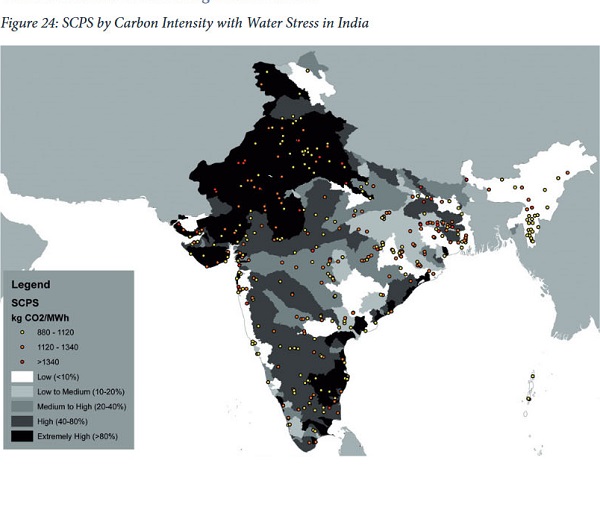
Not mentioned in the report, but the one thing India has been steadfast about is maintaining the right to pollute in the cause of economic development, and providing electricity to the whole population, demanding that industrial powers who have had their turn cut their pollution to make space.
Australia’s has a total coal-fired generation capacity of 29 GW of which 89% is subcritical. Our fleet is mostly middle-aged:
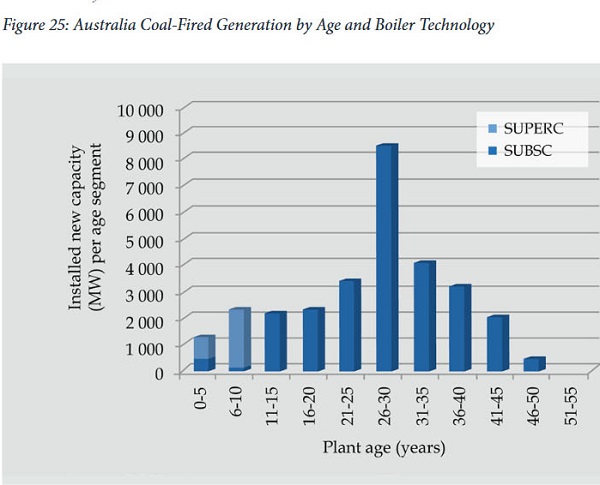
The report says little about Australia other than we repealed our flagship climate policy, the Clean Energy Act of 2011, in 2014 and replaced it with the Emissions Reduction Fund.
Of interest elsewhere, the largest share of Europe’s dirty power is in Germany (34%) and Poland (21%). Water stress is significant in Spain where they’ve built 700 desalination plants.
Australia has four companies in the top 100 owning SCPS – AGL Energy, Stanwell, Delta Electricity and Origin Energy.
The report does not recommend what policy makers should do, or discuss the difficulties that may be encountered. At time of publication (March 2015) about 50% of Australia’s SCPS were in private hands. There always was, it seems to me, a conflict of interest for Australian states selling these and other assets, such as electricity distribution grids, for the highest price on the expectation of future revenue and profit. In the current sale of Ausgrid, the NSW government has moved the goal posts at the 11th hour.
- NSW government has moved to delay a potentially embarrassing $520-per-household annual power price hike next year even at the cost of undermining its privatisation of power distribution firm Ausgrid.
There is talk of delaying price hikes until 2024.
Chinese government-owned State Grid Power Corporation, in the final mix for the bid, already owns 28 SCPS, although none I think in Australia.
Nevertheless there will be a reasonable expectation of grid profitability for decades, talk of off-grid power notwithstanding.
In selling dirty power state governments were at the very least buying a powerful lobby group. Our dependence on foreign capital simply amplifies the problem.

You can use sea water cooling or air cooling instead of evaporative cooling for power stations but there is an efficiency drop if you do.
The difference between capacity and generated ( in any energy source ) is so large, yet so often confused for each other, muddies the waters even further.
John, I get the impression that in both India and China water stress is going to be an increasing problem. Many of the power stations are well inland, which leaves air cooling, I imagine far from ideal.
Brian: The efficiency of a steam driven power plant is a function of the difference between the temperature of the steam entering the turbine and the steam in the condenser. With air cooling the lowest possible condenser steam temperature is the dew point while with air cooling the lowest possible condenser steam temperature is air temperature, which will always be higher than the dew point. Have seen figures years ago but the difference in efficiency under Australian conditions is significant.